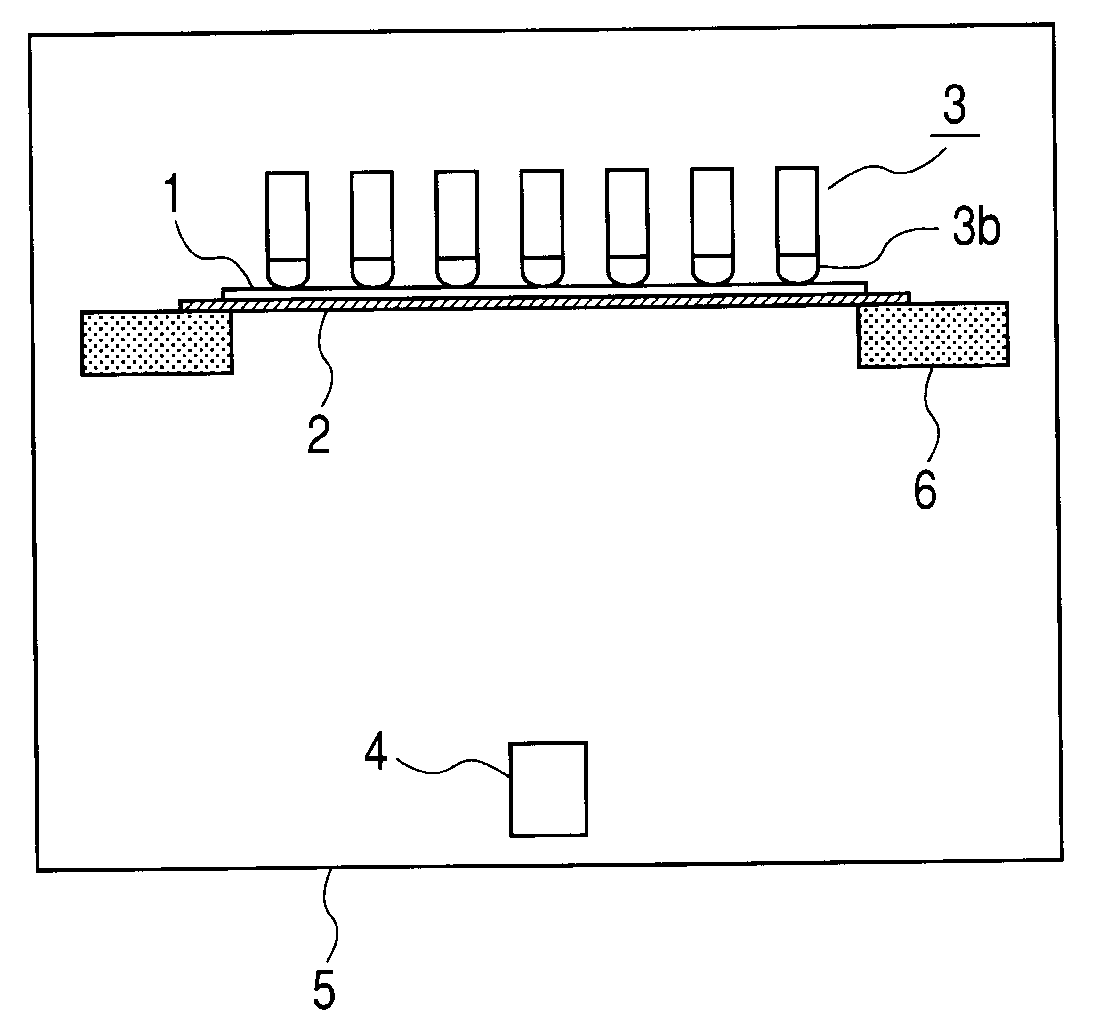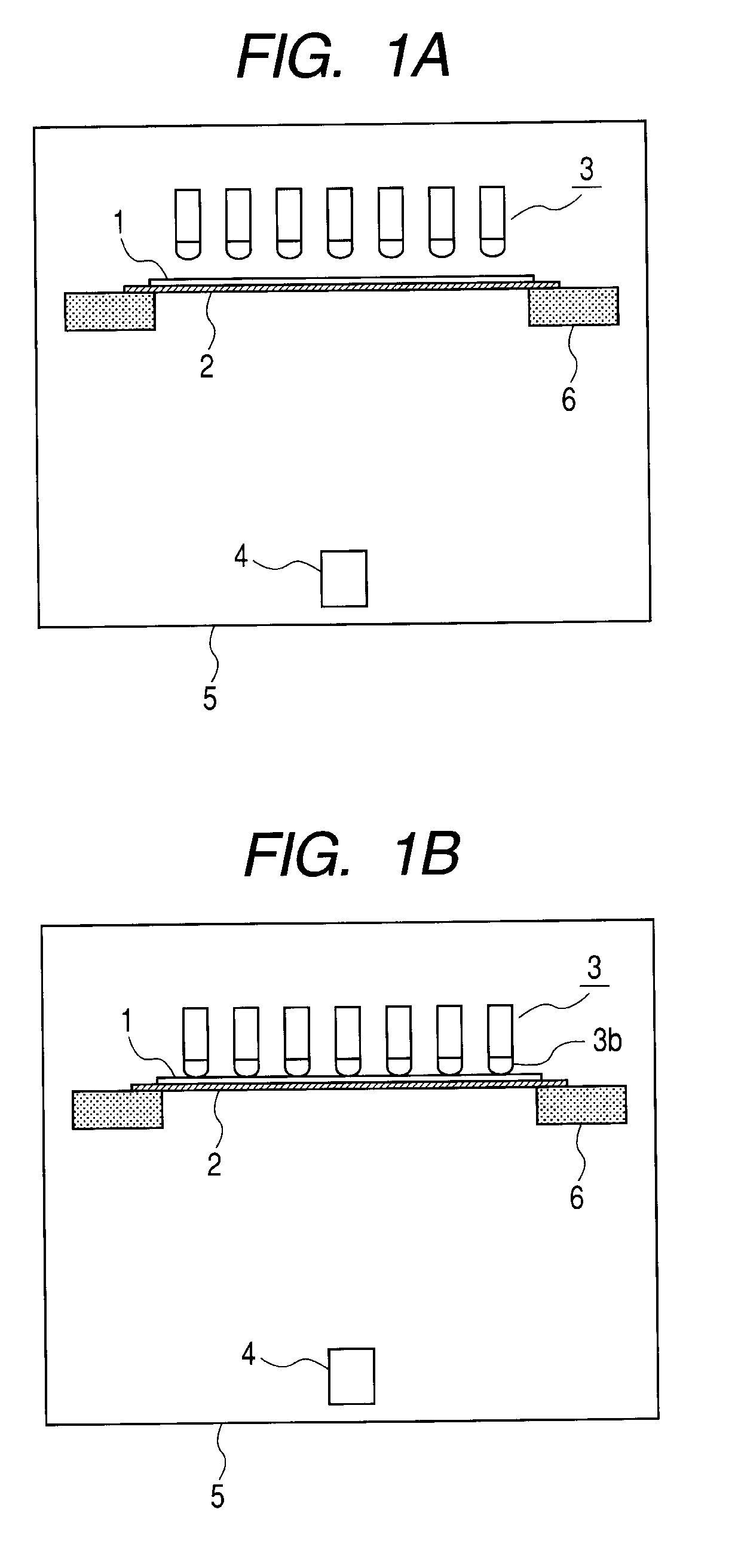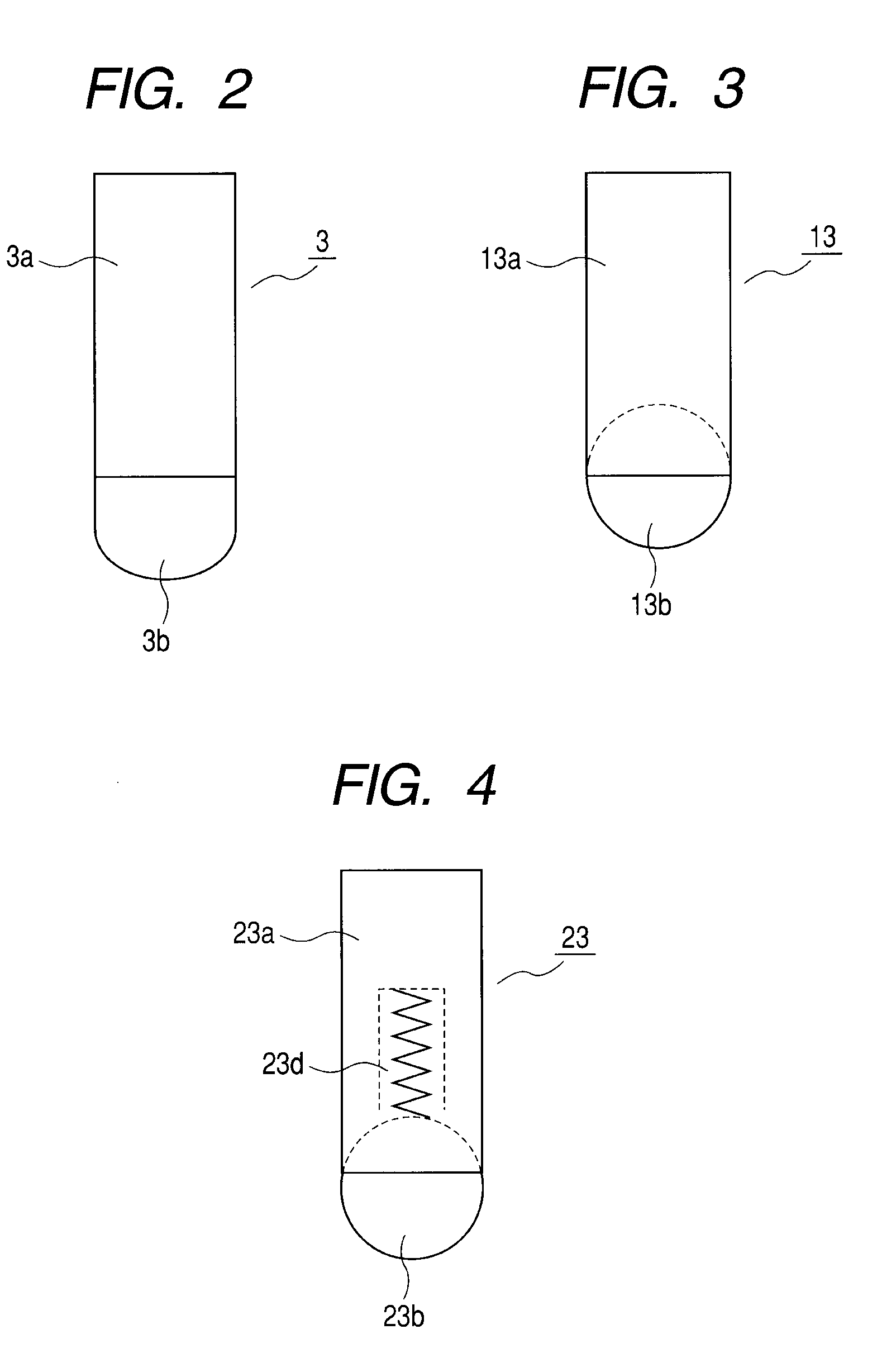Film formation apparatus and film formation method using the same
a film formation apparatus and film technology, applied in the direction of packaging, paper/cardboard containers, transportation and packaging, etc., can solve the problems of insufficient adhesion between the glass substrate and the mask, the mask and the glass substrate may not be easily separated from each other, and the quality of the mask is affected, so as to reduce the misalignment in the plane direction and good dimensional accuracy
- Summary
- Abstract
- Description
- Claims
- Application Information
AI Technical Summary
Benefits of technology
Problems solved by technology
Method used
Image
Examples
example 1
[0033]An organic EL device was fabricated on the glass substrate by the film formation apparatus. A known light-emitting material was placed in a film forming source which is the vapor depositing source. In the film forming chamber, the substrate was located with the surface, on which the film was to be formed, being oriented downward.
[0034]The glass substrate made of non-alkali glass with a thickness of 0.5 mm and dimensions of 400 mm×500 mm was used as the substrate. On the substrate, thin-film transistors (TFTs) and electrode wirings were formed in a matrix pattern by a conventional method. The size of one pixel was 30 μm×120 μm. A display region of the organic EL device was arranged in the center of the substrate to have dimensions of 350 mm×450 mm. For the mask, a tension was applied to the mask portion having a thickness of 50 μm and dimensions of 400 mm×500 mm to weld the mask portion to the frame having a thickness of 100 mm. The mask obtained by thus integrating the mask po...
example 2
[0038]For the pressing body, a bar having a diameter of 10 mm was obtained by cutting SUS303. At a tip of the bar, which was to be brought into contact with the substrate, the rotating body made of SUS303 was attached as the contact member. The twenty-five pressing bodies were arranged to evenly press the twenty-five positions on the surface of the substrate. The height position of each of the pressing bodies was adjusted to allow the twenty-five pressing bodies to press the substrate almost simultaneously. The other conditions for the used mask and substrate were the same as those of Example 1.
[0039]As in the case of Example 1, anode electrodes were formed on the glass substrate including the TFTs, and by using the film formation apparatus and a known mask for vapor deposition, alignment between the substrate and the mask was performed in a vacuum state. After the alignment mechanism was operated to bring the substrate into contact with the mask, the pressing mechanism was lowered ...
example 3
[0041]For the pressing body, the bar having a diameter of 10 mm was obtained by cutting SUS303. At the tip of the bar, which was to be brought into contact with the substrate, the rotating body made of SUS303 was attached as the contact member. A spring which is the elastic body made of the fluorine resin was provided inside the main body of the pressing body to allow the force of the pressing body to be transmitted to the rotating body through the spring. The twenty-five pressing bodies were arranged to evenly press the twenty-five positions on the surface of the substrate. The height position of each of the pressing bodies was adjusted to allow the twenty-five pressing bodies to press the substrate almost simultaneously. The other conditions for the used mask and substrate were the same as those of Example 1.
[0042]As in the case of Example 1, the anode electrodes were formed on the glass substrate including the TFTs, and by using the film formation apparatus and a known mask for v...
PUM
| Property | Measurement | Unit |
|---|---|---|
| friction coefficient | aaaaa | aaaaa |
| thickness | aaaaa | aaaaa |
| thickness | aaaaa | aaaaa |
Abstract
Description
Claims
Application Information
 Login to View More
Login to View More - R&D
- Intellectual Property
- Life Sciences
- Materials
- Tech Scout
- Unparalleled Data Quality
- Higher Quality Content
- 60% Fewer Hallucinations
Browse by: Latest US Patents, China's latest patents, Technical Efficacy Thesaurus, Application Domain, Technology Topic, Popular Technical Reports.
© 2025 PatSnap. All rights reserved.Legal|Privacy policy|Modern Slavery Act Transparency Statement|Sitemap|About US| Contact US: help@patsnap.com



